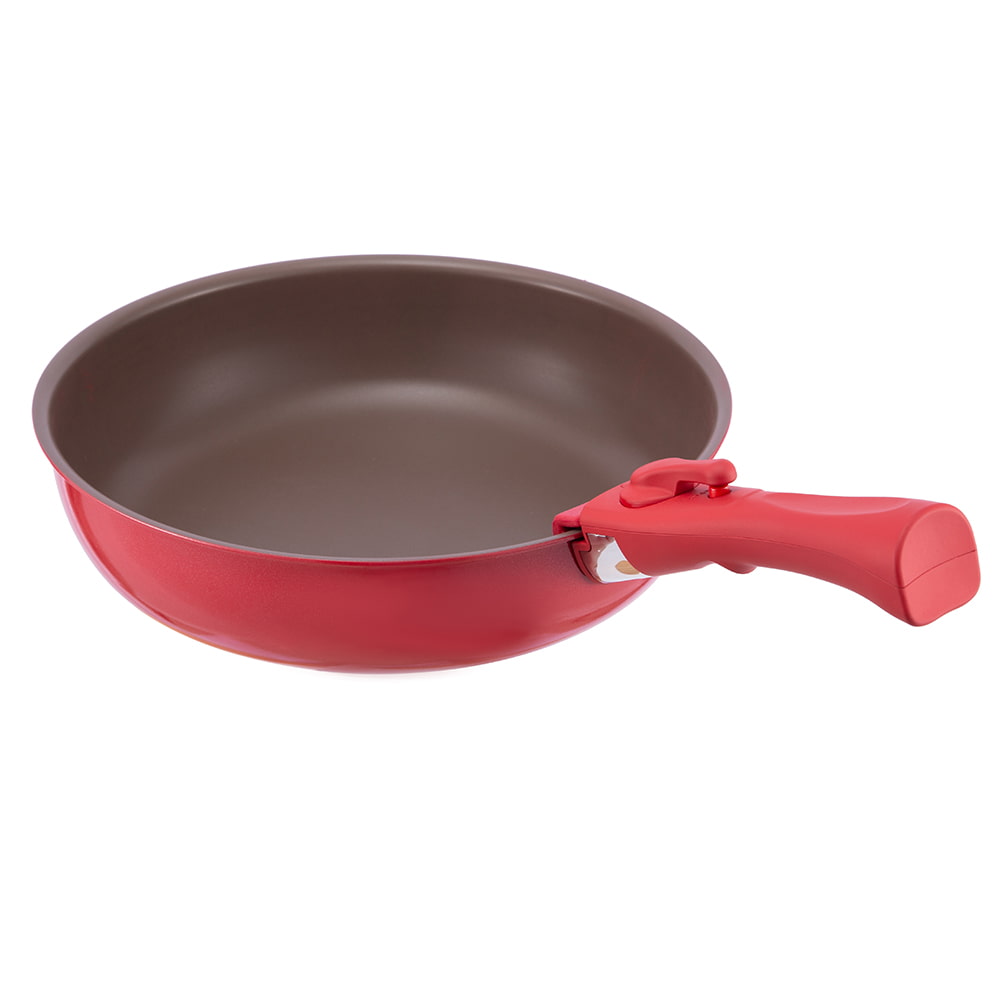In today's world of rapid technological development, surface treatment technology, as one of the key means to improve material performance, is constantly promoting the innovative development of various industries. Among them, plasma spraying technology, with its unique advantages, has shown extraordinary potential and charm in the field of cookware manufacturing.
Plasma spraying, as an advanced surface treatment technology, is centered on using high-temperature plasma flame flow as a heat source to heat the powder material to a molten or semi-molten state, and then spraying it onto the surface of the substrate at an extremely high speed. In this process, the powder particles undergo complex physical and chemical reactions with the surface of the substrate, such as melting, solidification, diffusion, etc., and finally form a dense and strongly bonded coating.
Compared with traditional surface treatment methods, plasma spraying technology has the following advantages:
High temperature and high speed: The high temperature characteristics of the plasma flame flow can quickly heat the powder material to the required temperature, while the high-speed spraying ensures the uniformity and density of the coating.
Wide material adaptability: Almost all fusible powder materials can be used as spraying raw materials, including metals, ceramics, composite materials, etc., which provides great flexibility for coating design.
Excellent coating performance: By precisely controlling the spraying parameters and powder composition, coatings with specific properties (such as wear resistance, corrosion resistance, high temperature resistance, etc.) can be prepared.
Environmental protection and energy saving: The plasma spraying process produces less waste gas and waste residue, and the energy utilization rate is high, which is in line with the green development trend of modern industry.
In the field of cookware manufacturing, the application of plasma spraying technology has greatly improved the performance and service life of cookware. The following are several typical application cases:
Non-stick coating:
Non-stick coating is one of the most common applications in cookware. Through plasma spraying technology, an ultra-thin coating composed of polymer materials such as PTFE (polytetrafluoroethylene) can be formed on the surface of the cookware. This coating has extremely low surface energy, making it difficult for grease and food to adhere to it, thereby achieving a non-stick effect. At the same time, due to the density and strong bonding force of plasma spraying, the non-stick coating is not easy to fall off, which extends the service life of the cookware.
Wear-resistant coating:
Plasma spraying technology also provides an effective solution to the problem of easy wear of cookware during use. By selecting powder materials with high hardness and wear resistance (such as aluminum oxide, silicon carbide, etc.) and forming a dense wear-resistant coating on the surface of the cookware, the wear resistance of the cookware can be significantly improved. Even in the face of frequent scratches and high-temperature erosion, the coating can maintain its integrity, ensuring the smoothness and beauty of the cookware surface.
Anti-corrosion coating:
For cookware that needs to be in contact with corrosive substances for a long time (such as steamers, stew pots, etc.), plasma spraying technology can also prepare coatings with excellent anti-corrosion properties. These coatings are usually made of corrosion-resistant materials such as stainless steel and titanium alloys, and are firmly attached to the surface of the cookware through plasma spraying technology. They can effectively resist the erosion of corrosive substances such as acids and alkalis, and protect the base material of the cookware from damage.
Cookware treated with plasma spraying technology has shown many advantages in performance:
Wear-resistant and durable: The presence of the wear-resistant coating makes the surface of the cookware harder and more scratch-resistant, and it is not easy to wear or deform even after long-term use.
Non-stick and easy to clean: The non-stick coating greatly reduces the generation of oil smoke and food residue during cooking, making the cookware easier to clean and maintain.
Anti-corrosion and anti-rust: The addition of anti-corrosion coating effectively extends the service life of cookware and reduces damage and replacement frequency caused by corrosion.
Health and safety: The materials used in plasma spraying technology meet food safety standards and will not pollute food or harm human health.
Energy saving and environmental protection: Compared with traditional cookware manufacturing processes, plasma spraying technology is more environmentally friendly and energy-saving, which conforms to the sustainable development concept of modern society.
With its unique advantages and wide application prospects, plasma spraying technology has shown great potential and value in the field of cookware manufacturing. Cookware treated by this technology not only has excellent performance and long service life, but also better meets the modern people's pursuit of health, environmental protection and convenience. With the continuous advancement of science and technology and the increasing demand of consumers, it is believed that plasma spraying technology will play a more important role in the field of cookware manufacturing, bringing more convenience and beauty to our lives.
 No. 1, Jingwei Road, Yangcheng Lake Town, Xiangcheng District, Suzhou City, China
No. 1, Jingwei Road, Yangcheng Lake Town, Xiangcheng District, Suzhou City, China [email protected]
[email protected] +86-13913553688
+86-13913553688
 search
search
 中文简体
中文简体 English
English русский
русский Français
Français Español
Español 日本語
日本語






-4.jpg)
-1.jpg)

-3.jpg)
-5.jpg)

-3.jpg)
-9.jpg)
-3.jpg)
-14.jpg)

